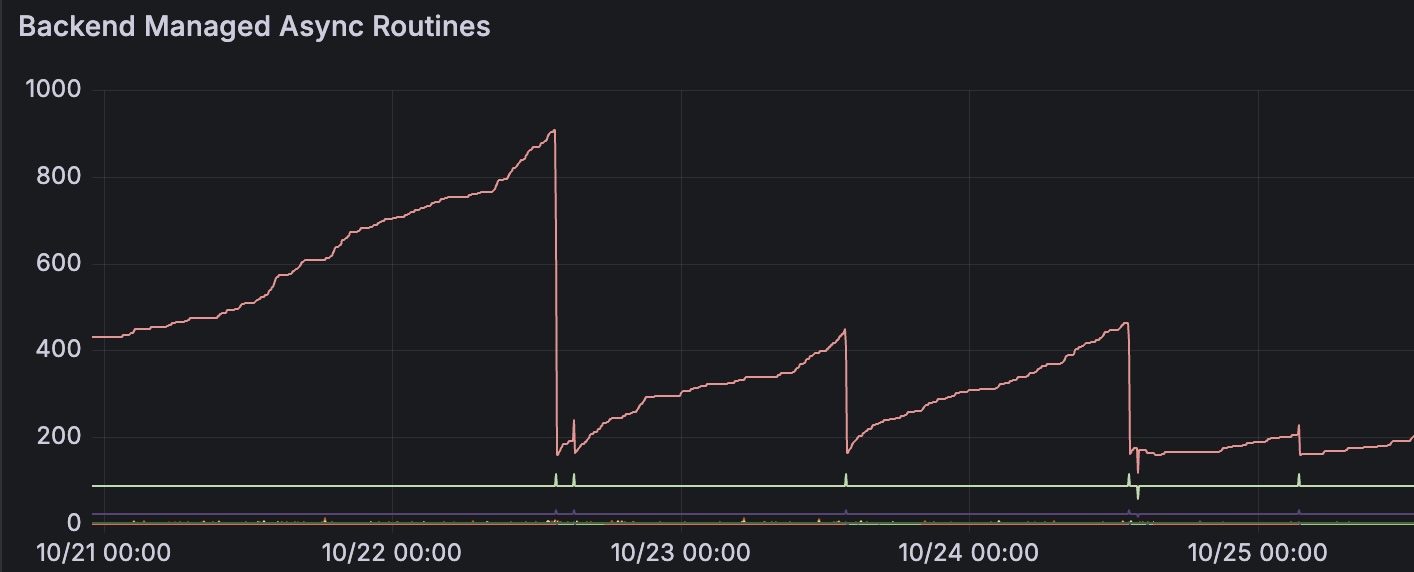Introduction to Routine Leaks
In the Go programming language, goroutines are a powerful feature for managing parallelism and concurrency. A goroutine is a lightweight unit that allows functions or methods to execute asynchronously, enabling the program to perform multiple operations in parallel without blocking or slowing down. However, while this flexibility provides numerous advantages, it also introduces a challenge known as the routine leak, which can easily go unnoticed and harm the application’s performance.
A routine leak occurs when a goroutine remains active longer than necessary, stuck waiting for resources or data that never arrive. Each goroutine that "leaks" continues to consume memory and other system resources, causing an accumulation of running goroutines. The result is a gradual saturation of memory, with significant impacts on the program's speed and stability.
Common Causes of Routine Leaks
Routine leaks can have various origins; some of the most common include:
Goroutines blocked on a channel: A goroutine waiting for a message from a channel can remain indefinitely blocked if no other process writes to the channel. For instance, in an asynchronous operation awaiting data from a calling function, if the function stops sending data or is closed prematurely, the goroutine remains stuck waiting on that channel.
Missing timeouts and cancellations: When cancellations or timeouts are not adequately handled, some goroutines may continue running even after their associated operation has ended. Without robust management of contexts (context) to control the time and duration of operations, the risk of leaving goroutines hanging increases significantly.
Infinite loops: A loop that does not properly check exit conditions can cause an infinite loop within a goroutine. Even small oversights, like an incorrect condition check, can lead to an accumulation of execution cycles that congest the environment.
Incomplete resource closure: Sometimes, goroutines are not correctly closed when they finish their task. For example, if a goroutine is waiting for an external response or an event that never occurs, it can remain in a "zombie" state, occupying memory and system resources without performing any useful function.
Managing these scenarios requires not only careful coding but also adopting effective strategies to prevent and monitor routine leaks. This is where our AsyncRoutineManager comes into play—a targeted approach to control the lifecycle of goroutines and optimize resource usage.
Introducing the AsyncRoutineManager
To address the issues associated with routine leaks, we developed a customized object called the AsyncRoutineManager. This manager provides a centralized, structured way to oversee goroutine activity, allowing for enhanced tracking, monitoring, and control. Here’s a closer look at its core features and how they contribute to more efficient goroutine management:
Named Routine Assignment: Each goroutine managed by the AsyncRoutineManager can be assigned a unique name, making it easier to identify individual routines and trace specific tasks. This naming feature simplifies debugging and enables us to understand the role of each goroutine at any point in the application.
Internal Tracking of Running Routines: The AsyncRoutineManager maintains an internal list of all running routines, providing a centralized view of active goroutines within the system. This list includes both the start and end timestamps for each routine, enabling precise monitoring of execution time and resource consumption.
Observer Notifications: The manager allows the registration of one or more observers, which can receive real-time notifications whenever a new goroutine is started or an existing one finishes execution. These notifications enhance responsiveness and provide immediate insights into the goroutine lifecycle, enabling prompt actions if unexpected routines start or if excessive execution times are detected.
Snapshot Requests: At any moment, the AsyncRoutineManager can provide a snapshot of the current state, detailing the number, names, and durations of active routines. This snapshot offers a clear view of system activity, allowing developers to quickly identify routines that may have exceeded expected execution times or those potentially at risk of leaking.
This design, combining structured monitoring with real-time notifications, allows for rigorous control over goroutine management, preventing routine leaks and ensuring that resources are allocated and released efficiently.
Technical Details
The AsyncRoutineManager introduces a practical approach to launching and monitoring goroutines, with an emphasis on prevention of routine leaks. Here’s how it can be used effectively:
-
Initializing and Managing Routines: To begin, the
AsyncRoutineManageris implemented as a singleton, initialized with essential configurations. These include options to enable or disable the manager itself, along with controls for cyclic snapshotting and adjustable tracking intervals. When a goroutine is launched, it is automatically added to the manager’s internal list with a unique name, start timestamp, and relevant metadata. Thanks to its singleton design, running a routine through theAsyncRoutineManagerremains nearly as straightforward as using Go's native approach. -
Routine Monitoring: One of the
AsyncRoutineManager's key advantages is its ability to provide detailed insights on currently running routines, both on-demand and in real-time through observers. For each routine, we can access information such as its start and end times, its name, and the number of routines with the same name currently running. Additionally, when creating a new routine, custom data can be attached, allowing further differentiation between routines with identical names. This flexibility makes tracking and managing goroutines far more intuitive and efficient. -
Realtime Information: With a custom observer, we published all active routine information to Prometheus, enabling straightforward monitoring of routine execution. This setup allows us to configure alerts that proactively notify us when an excessive number of routines of a particular type are running, giving us the ability to address potential issues before they impact system performance.
Below is an example of how to use the AsyncRoutineManager, along with specific API calls for routine initiation, observer registration and snapshot requests.
async.NewAsyncRoutine("egress-test-subnet", ctx, func() {
// ... my routine code
}).
WithData("subnet_id", subnetID).
Run()
async.Manager().AddObserver(myFancyObserver)Using a Prometheus observer, we have been able to gather info like this:

Finally, thanks to grafana, we have been able to have a clear view of what was happening:
